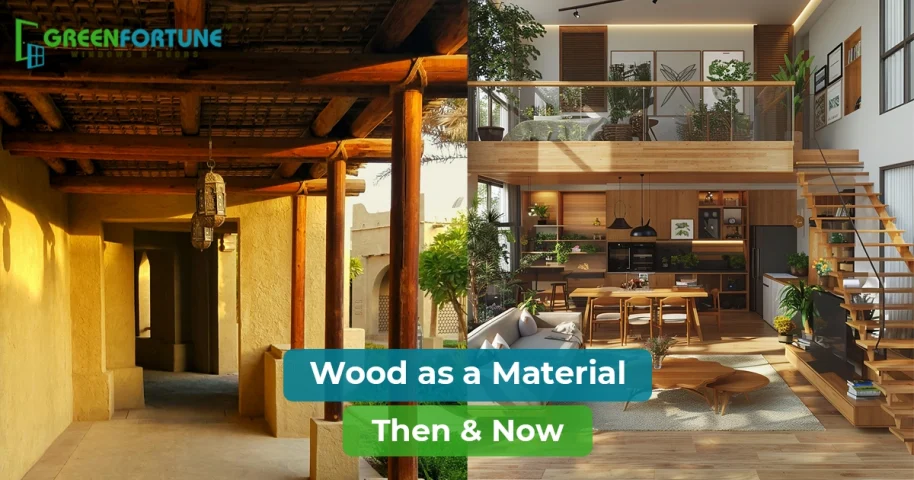
Complete Guide to PVC Borewell Pipes: Drilling Pipe Lengths, Fittings & Hose Pipe Options
May 16, 2025
Bring Home Luxury: 7 Dining Table Design Marble Top Ideas
May 16, 2025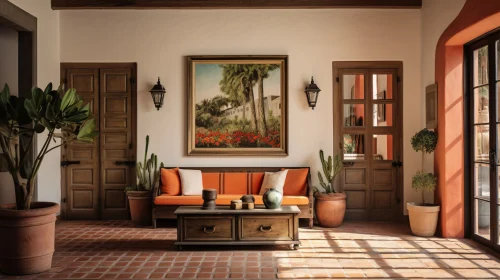
Thick wooden beds. Carved pooja rooms. Full wall showcases. Heavy furniture in every corner. That’s what many of us remember when we think of our grandparents’ homes.
But today? We live in compact flats with floating shelves, light plywood furniture, and open spaces. So, what changed?
How did wood as a material, once used to fill every corner, become something so minimal and subtle? Let’s discuss this generational shift in this blog.
Maximalist Homes Vs Minimalist Homes:
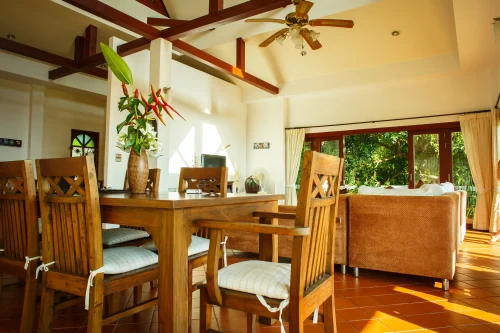
Factor | Maximalist Homes | Minimalist Homes |
Size of House | Large, multi-room, independent homes | Compact flats or rented spaces |
Family Structure | Joint families | Nuclear families |
Mobility | Settled in one place for years | Move every few years |
Storage Style | More furniture = more storage | Hidden storage, modular pieces |
Design Goal | Fill space, show richness | Free space, reduce stress |
Let’s Look At The Older Generation. When Wood Was Everywhere
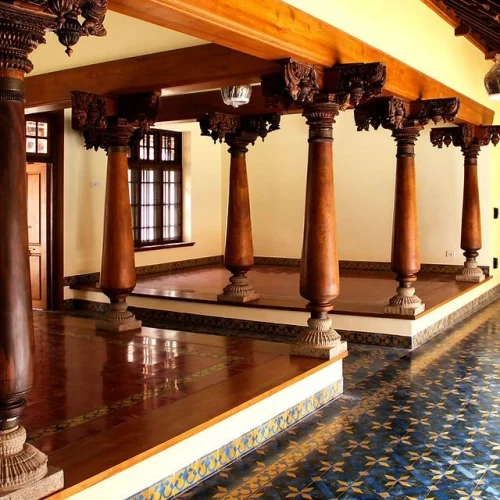
Back in the day, wood as a material meant luxury. If your home had a lot of teak or rosewood-made things, it meant you were doing well. And homes were designed to show it.
Here’s what you would often find
- Huge wooden cots with carved legs
- Wooden wall panels in living rooms
- Carved wooden doors with bells and floral patterns
- Oonjal (wooden swing)
- Showcases made fully of solid wood with glass shutters
- Wooden rafters in the ceiling
- 6 to 8 seater dining tables, all in heavy wood
- Floor-to-ceiling cupboards with thick wooden shutters
- Full-length window frames with wooden pelmets
In fact, in many homes, even the main structure had wooden beams.
A good example is Chettinad houses. It showcases the grandness of wood building styles. This was the peak of the Maximalist architecture, where the goal was to fill every space, layer every surface, and go all out.
The homes were designed to be passed down to the next generations and so on. Durability mattered. And since families were joint and spaces were large, bulky furniture was normal.
What About Today’s Modern Homes?
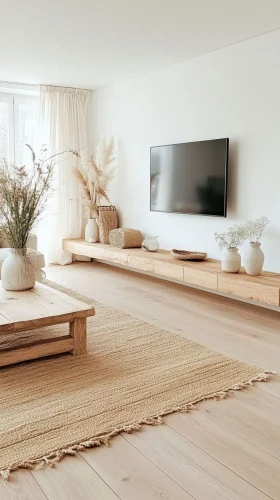
Most of us live in apartments, rented spaces or compact houses. We prefer wood as a material to be
- Lightweight
- Easy to maintain
- Budget-friendly
- Multi-purpose
You can see wood in things like
- Simple plywood beds with clean frames, under-bed drawers
- Floating wooden shelves instead of wall units
- Fabric sofas with a minimal wooden base
- Compact 4-seater dining tables
- Small wood kitchen cabinets
- Minimal hanging wooden pooja shelves
- Simple, matte-finished wardrobes with sliding panels
This shift is part of what we call Minimalist architecture. It focuses on clean lines, empty space, and only what’s needed. Nothing extra.
Also read: Best Wooden Cabinet Designs & Colours For Your Home
What Triggered The Shift?
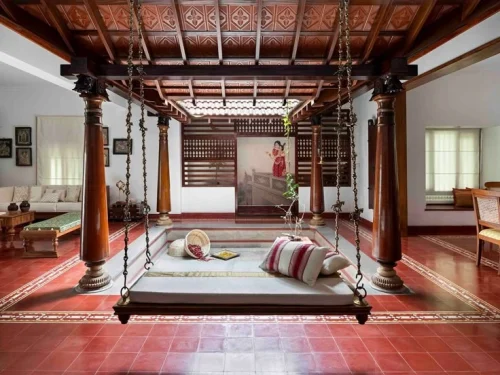
The younger generation didn’t plan to reject all that. Their lifestyle simply changed. Their focus changed to simple, smart and space-saving.
- We started living in smaller homes- flats, not bungalows
- Families became nuclear
- Jobs required us to move often
- Budgets became tighter
- And we began to value open space more than showpieces.
So, Is Wood Still Relevant?
Absolutely. In fact, wood as a material is more relevant than ever, but in a new way. It’s just, we have simply stopped using it to show off. Instead, we now use wood to solve problems- save space, reduce weight, simplify cleaning. It’s no longer just for tradition. It’s for making homes work better.
How Wood Is Used Today?
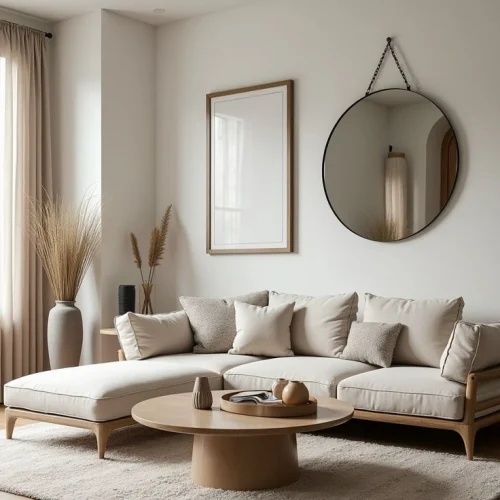
- No more solid teak or rosewood everywhere. Now, it’s plywood, engineered wood, veneer, or laminates.
- No more carvings or bulky handles. Now, it’s straight lines, smooth panels and clean edges. Think of Scandinavian style- soft tones and matte finish.
- No more glossy maroon and deep browns. Today’s wood finishes are calmer colours like light oak, white-washed pine, ashwood, minimal walnut, etc.
Final Takeaway
Wood as a material didn’t change, but we did. It is still one of the most loved materials across generations. Our grandparents filled their homes with carved, grand wooden pieces. We fill ours with just enough wood to keep things warm, aesthetic and simple. That’s the shift.
Also read: Advantages & Disadvantages Of Wooden Moulded Doors
Homes have changed, and so have our needs. That’s why GreenFortune makes uPVC windows and doors that don’t rust, don’t need painting, and help keep dust and noise out. They’re easy to clean and built for the way we live today.
FAQs
1). Why did people stop using heavy wooden furniture?
Heavy wooden furniture takes up more space, is hard to move, and needs regular care. As homes got smaller and people began moving often, lighter and easier-to-maintain furniture became the better choice.
2). Is plywood strong enough for everyday use?
Yes, good quality plywood is strong enough for daily use. It’s lighter than solid wood, costs less, and works well for beds, shelves, and cabinets in modern homes when used properly.
3). Can I still use wood in a small flat?
Yes. You can use wood smartly in a small flat. Try wall-mounted shelves, compact wooden furniture, or small wooden accents like a headboard or a pooja shelf that won’t take up space.

